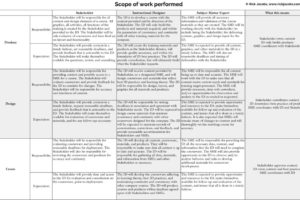I have a bachelor’s degree in Philosophy. Most people, when I state this, look at me with dead eyes like I just started speaking in ancient Greek. People don’t really know what you can do with a BS in Philosophy, which I lovingly refer to as a BS in BS. Most people, when they meet someone with a bachelor’s degree assume they spent their days at university, lying in the grass with other philosophers, discussing the meaning of life. Then, when we all giggle that there is no answer, and we all go off to the pub for billiards and ale. Too many, especially those in business, a philosophy degree is as useful as a water pitcher made of window screen.
But, the reality is, philosophy is grueling. It is actually the mental equivalent of moving bricks, ten at a time, up five flights of stairs – for 10 hours. When philosophers discuss developing new philosophers, they refer to it as training. Graduate students in philosophy are being trained on how to do philosophy – trained how to read analytically, trained how to write clearly, and trained how to argue astutely. Philosophy is more than asking a question, it is reading and understanding complex arguments, analyzing them for errors and strengths, then building a persuasive argument using evidence, premises, and drawing conclusions.
Philosophy is the very thing that businesses should want in their workforce. Every business should have the business philosopher that specifically is hired to analyze plans, analyze goals and processes, and then present the Strengths, Weaknesses, Opportunities, and Threats (SWOT). SWOT is a business term, but it is exactly what philosophers are trained to do in order to get their degrees.
The thing is, many companies, if they hired well, have actually hired a philosopher – the instructional designer. All that I have written about a philosopher is what an instructional designer should be – an analyst of complex processes and issues, and the provider of a defensible, articulate solution. Philosophers do ask “why,” but they also answer the why with an argument, examples, and conclusions.
Instructional designers should see themselves as the philosophers of the business, by being the philosophers of training. When we are told “this group needs this training” we ask questions.
What is driving the stakeholder to believe they need that training?
Why do they think there is a gap?
Is there a gap in knowledge?
Is it the gap they think it is?
And then we study, read, research, analyze, and come to a conclusion.
“You believe you need training because of this observed behavior, but that observed behavior is actually due to the lack of these tools/knowledge/skills.” Then we present the evidence, which is a trove of performance data, task analysis, gap analysis, management and employee survey data, etc.
We are given a statement. We research and analyze whether it is sound or valid. Then we present premises and conclusions based on all of it.
The difference between philosophy and training is that in training, you can track and evaluate the outcome. In philosophy, it isn’t that easy to test a theory – all the theories have holes. Philosophy is designed to be informative. Training is measurable and, depending on the goals for performance outcomes, it can be measured quickly for immediate impact and measured over the long term for behavioral changes.
The problem? Businesses don’t know enough of what an instructional designer should do, let alone understand that their role is more than just making slide decks. If a business doesn’t recognize the value, the need, or the purpose of instructional design as anything more than “that person that makes the things we want with cool transitions,” then they will never get to the point of having a philosopher on their team to drive quality training and asking the important questions.
A business should have a strategy, but if you don’t have anyone asking how the business executes that strategy, then the strategy is just a cool idea. Strategy is turned into operational plans. Operational plans are turned into tactical plans. Tactical plans provide guidance on what an employees task is to achieve the plan. The only way employees know how to execute the task is through training. Without someone asking the question of “what does ‘the task’ look like?” the employees won’t do it well, right, or accurately and the whole house collapses.
Instructional designers are the philosophers of training, and ultimately, the philosophers for the business. When an instructional designer has the buy-in and is allowed to do their job, they will produce solutions no one thought of, discover issues no one saw, and develop processes that streamline the whole tactical action.
A business without a philosopher – the instructional designer – might as well be making water pitchers of window screen.






Leave a Reply
Your email is safe with us.
You must be logged in to post a comment.